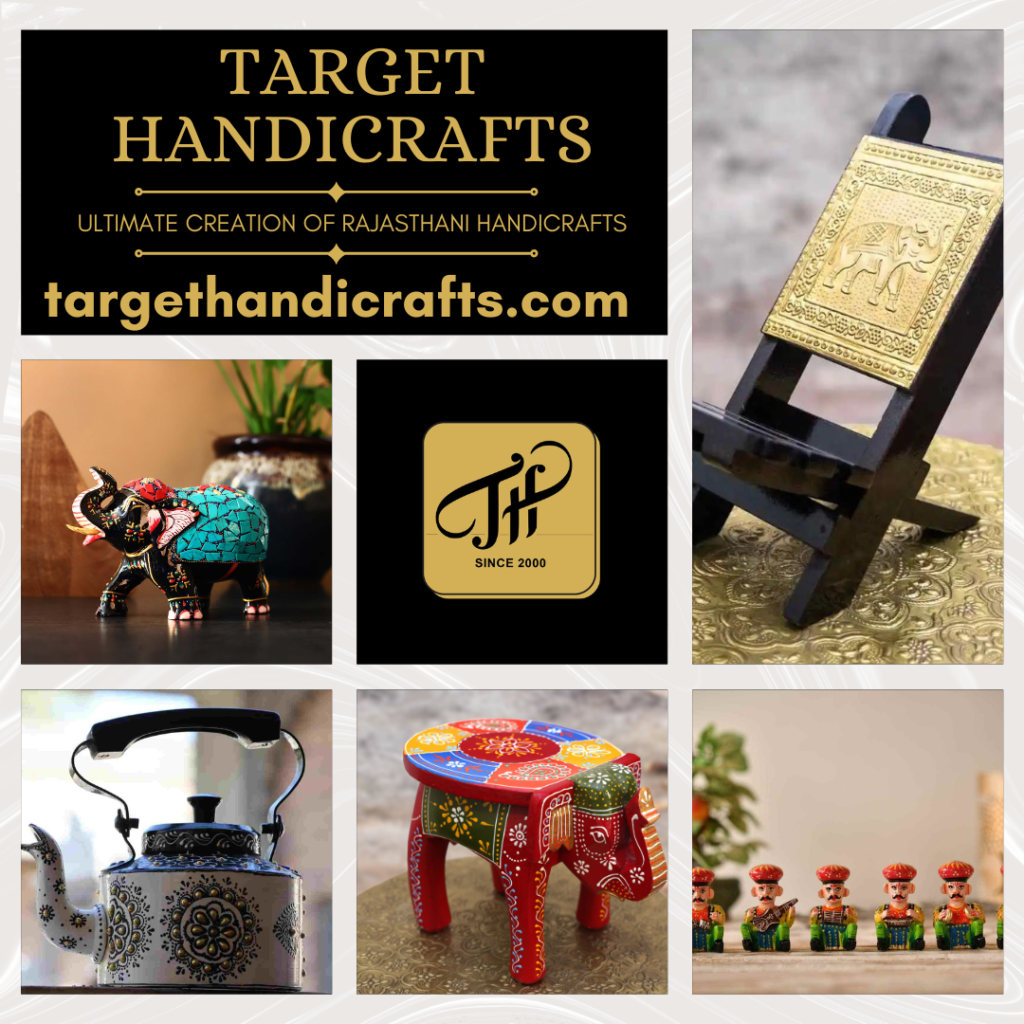The History of Rajasthani Handicrafts

Rajasthan, the land of kings, is not only famous for its majestic forts and palaces but also for its rich tradition of Rajasthani Handicrafts. The state’s artistic heritage is deeply intertwined with its history, culture, and the vibrant spirit of its people. Rajasthani handicraft items are renowned for their intricate designs, vibrant colors, and exceptional craftsmanship, reflecting the royal patronage and cultural diversity that the region has enjoyed for centuries.
Historical Background
Ancient Origins
The history of Rajasthani handicrafts can be traced back to ancient times. The Indus Valley Civilization, which flourished around 2500 BCE, showcased early examples of skilled craftsmanship in the region. Excavations have revealed terracotta figurines, pottery, and jewelry that indicate a high level of artistic proficiency.
Rajput Era
The Rajput era, which began in the 6th century CE, marked a significant development in Rajasthani handicrafts. The Rajput kings and their nobles were great patrons of art and culture, encouraging the growth of various crafts. This period saw the evolution of distinctive styles and techniques that have become synonymous with Rajasthani handicrafts.
Mughal Influence
The Mughal Empire, which ruled over Rajasthan from the 16th to the 18th centuries, had a profound impact on the region’s arts and crafts. The fusion of Mughal and Rajput styles resulted in unique and exquisite creations. The Mughal emperors brought with them Persian artisans who introduced new techniques, leading to innovations in textiles, jewelry, and miniature painting.
Major Handicrafts of Rajasthan
Textile Art
- Bandhani (Tie and Dye): One of the oldest forms of textile art in Rajasthan, Bandhani involves tying small portions of fabric and then dyeing it to create intricate patterns. This craft is particularly popular in regions like Jaipur, Jodhpur, and Udaipur.
- Block Printing: This traditional method involves stamping fabric with intricately carved wooden blocks dipped in dye. Sanganer and Bagru are famous for their unique styles of block printing.
- Leheriya: This technique produces wave-like patterns on fabric through a resist-dyeing process. Leheriya sarees and turbans are iconic symbols of Rajasthani culture.
Jewelry
- Kundan and Meenakari: These ancient jewelry-making techniques were patronized by the Rajput and Mughal courts. Kundan involves setting precious stones in gold, while Meenakari is the art of enameling on metal. Jaipur is a renowned center for both these crafts.
- Thewa: Originating in the 18th century, Thewa is a special art of fusing gold with multicolored glass. This intricate craft is practiced in Pratapgarh.
Pottery
- Blue Pottery: Introduced by Persian artisans during the Mughal period, Blue Pottery is known for its vibrant blue and white designs. Jaipur is the primary hub for this unique craft.
- Terracotta: This ancient form of pottery is still practiced in various parts of Rajasthan. Molela, a village near Udaipur, is famous for its terracotta plaques depicting mythological themes.
Painting
- Miniature Painting: The tradition of miniature painting in Rajasthan dates back to the 16th century. These paintings, characterized by fine brushwork and vibrant colors, often depict court scenes, mythology, and nature. The schools of Mewar, Marwar, and Kishangarh are renowned for their distinct styles.
- Pichwai Painting: Originating in Nathdwara, Pichwai paintings are large cloth paintings depicting scenes from the life of Lord Krishna. They are used as backdrops in temples and during festivals.
Woodwork
- Furniture: Rajasthani wooden furniture is known for its intricate carvings and traditional designs. The Shekhawati region is particularly famous for its painted and embellished furniture.
- Toys: Wooden toy-making is a traditional craft in regions like Udaipur and Jaipur. These toys are often painted in bright colors and depict animals, birds, and human figures.
Contemporary Developments
In recent years, Rajasthani handicrafts have gained global recognition. The state government and various organizations have taken initiatives to promote and preserve these traditional crafts. Craft fairs, exhibitions, and online platforms have provided artisans with opportunities to reach wider audiences.
Conclusion
The history of Rajasthani handicrafts online is a testament to the region’s rich cultural heritage and artistic ingenuity. These crafts, passed down through generations, continue to thrive and evolve, capturing the imagination of art lovers worldwide. The vibrant colors, intricate designs, and unparalleled craftsmanship of Rajasthani handicrafts remain a symbol of the state’s enduring legacy and artistic excellence.





